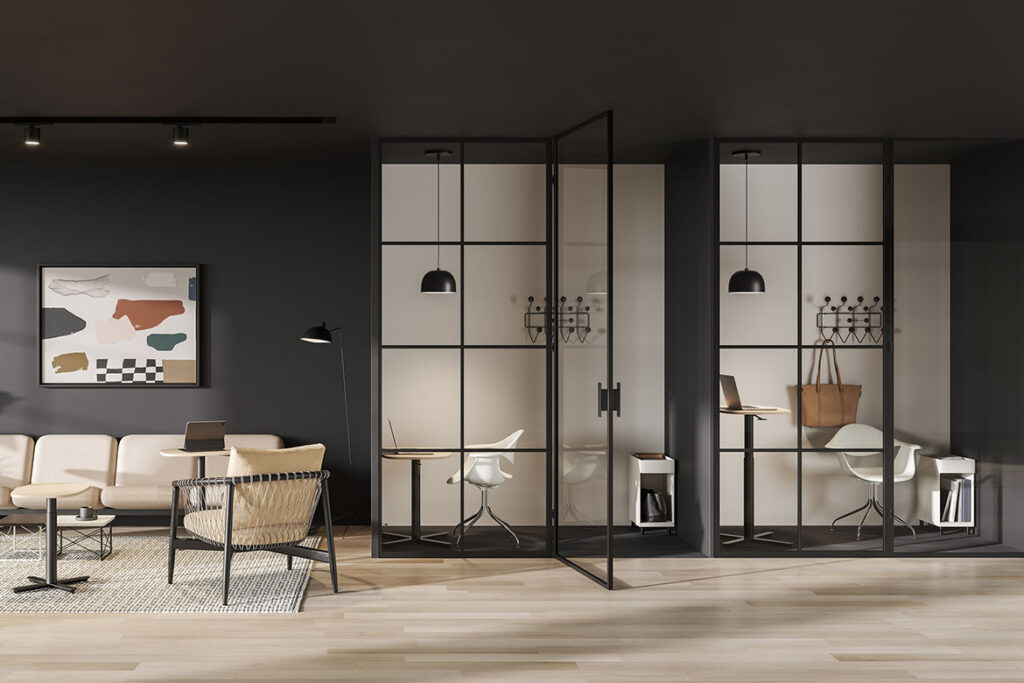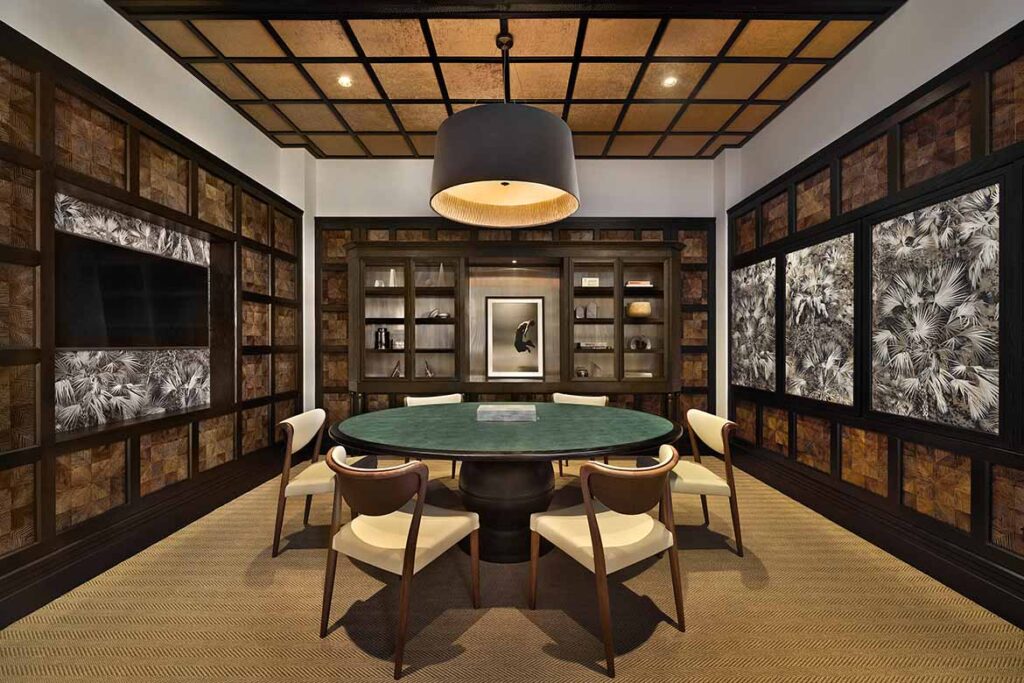Insights and predictions for what work will look like in Asia for 2023 and beyond.

PayPal Beijing by M Moser Associates. Photography by Vitus Lau.
February 28th, 2023
Last year, UOB surveyed 1000 Singaporeans and found that nearly half of them had already gone back to work five days a week. As the pandemic wanes further in 2023, that number is probably considerably higher, with much of that attributable to company mandates.
It’s one thing to bring them back to the office; however it’s quite another to keep them engaged and productive after several years of remote work, anxiety, safety fears and mental health issues. What, then, do organisations need to consider in order to create sustainable work environments that tick a lengthy list of boxes? Here’s an overview of some of the trends we can expect to see play out in Asia in 2023 and beyond.
What hybrid work looks like varies from organisation to organisation. What’s becoming apparent is that the no one size fits all approach also applies within companies. Local culture, a city’s infrastructure and public transport system, the availability of childcare… these are all factors that impact employees in their day to day.
“Organisations that had great global programmes or global strategies are quickly realising that it’s really important to have a local response and understanding of local drivers,” says Tamagin Blake-Smith, who is Design & Strategy Director at luxury coworking provider The Great Room.

It’s no longer enough to provide employees with desks and chairs; the Great Return is going to require something more. “People want an experience,” says Tatiana Gomez. She previously worked for leading furniture manufacturer Herman Miller as Workplace Strategies Consultant APMEA Region, but the Insights team now sits under MillerKnoll as a result of a merger between Knoll and Herman Miller.
“We’ve done surveys with MNCs [multinational corporations] in the region. People want to come back for the coffee, for the pantry, for the massage chairs, for the big fancy meeting rooms with all the technology.”
Again, the wish list varies from country to country. “In Singapore, Malaysia and India, it’s food, so you need amenities around food specifically; a well-equipped pantry or full-service cafe,” says Gomez. “And there’s a huge appetite for wellbeing in India. In Japan and Korea, it’s about creating a fun workplace.”

In positioning the office as a destination, we can expect to see a focus on spaces that support socialising. This might look like a community kitchen, in-office cafe or dining room, casual collaboration zone, event space or meeting room, or a combination of these elements.
“I’m seeing a lot of organisations saying, ‘Don’t come back to do your work; you do that anyway. Come back to build social capital and come back to cross collaborate. Come back to have lunch.’ I think we’re going to see a future where there are far less desks or libraries; we’ll see a massive shift towards social collaboration spaces,” says Blake-Smith.

While Gomez sees the majority coming back to work to socialise, a small but significant percentage of people are coming back to do “heads-down work,” she says. “We’re seeing a need for privacy. A lot of our customers are requesting smaller meeting spaces, small-form booths and different kinds of privacy solutions.”

Welcome to the world of phygital work, an experience that combines physical and digital space. Whether work happens online or offline in an office is no longer relevant. “That line is gone,” says Victoria Gilbert, Director and Head of Asia Pacific at GlobeScan, a global insights and advisory consultancy. “There are just times people are working, and times they aren’t.”
But phygital work requires a new approach, says Lawrence Lok, Director for M Moser Associates, who specialises in designing workplace environments. “The office needs to provide that seamless connection between physical and virtual participation in the workforce,” says Lok, who is based in China. “One of the trends we’re seeing in Asia is a lot more areas that are designed not just for physical interaction, but also interaction in the cloud. To make that work, you need the right technology.”
Workplace interaction in the metaverse is also on the cards, says Gilbert. “I think there’s going to be a move towards creating spaces in the metaverse that are complementary to physical spaces. Do you host staff meetings here, or hold company retreats? Companies need to think about what their role is here. If you totally ignore it, you’re going to get left behind.”
Phygital strategies include video conferencing tools, furniture that caters to cabling needs, fitness and wellness classes that employees can join in-person or online, as well as smart buildings and AI solutions.
“Now, we’re seeing a lot more intelligent controls. To address this, we usually do something called integrated technology design. First, we have a digital twinning platform – a digital representation of the office itself. That digital twin has all the information about the environmental factors, from lighting temperature and time to air quality. It’s all tethered to Internet of Things updates and intelligent sensors, feeding into the digital twinning platform and then controlling the environmental controllers.”
In this way, M Moser and the organisations it works for can measure how spaces are being used, and when and why. “We can then optimise,” says Lok. “And we can even deploy AI algorithms to do that. It’s a huge revolution. Design isn’t just about the physical space anymore. Now, we’re designing the engineered environment. We’re very excited about it.”

The ability to gather data is contributing to yet another trend: experimentation. “I’m seeing organisations with 300,000 people running experiments that engage behavioural psychologists in changing leadership and ways of working,” says Blake-Smith.
“Organisations have had a huge real estate portfolio that’s sat empty for two and a half years,” says Gomez. “They’re questioning if they should surrender some of their real estate. But they don’t know which direction to move forward in, so they’re doing a lot of piloting with spaces for three to six months.”
Herman Miller is also fuelling the trend towards experimentation through Work, Redefined – The Design Challenge, which ran in the Middle East in 2022, and previously in 2021. The starting point was an empty (digital) space, with certain parameters established by Herman Miller. In 2022, the winning design put wellness at the centre of work, while 2021’s winner in Australia, SLAB, put community at the core of its imagined workplace, offering a real-time look at the success of hybrid strategies. Read more about it here.
Energy savings are now par for the course; the new big things are Environmental Social Governance (ESG), decarbonisation and net zero targets.
Gilbert attributes the renewed corporate focus on sustainability to the rise of Millennials and Gen Z in the workforce. “By 2025, Millennials will make up 75% of the workforce. Their focus on sustainability means it has to play a role in the workplace.”
At the same time, however, we’re seeing a lot more questioning of what that actually means. “What we’ve seen over the last year or two, and in our research, is this move from having a purpose to having an impact. It’s great that you’re setting goals and targets. But can you show that you’re doing it?”
In the workspace this could play out in the form of recycled materials, waste reduction solutions, greywater systems, exercise equipment that contributes to powering the office, vertical gardens and much more.
The pandemic put the spotlight on mental health, says Blake-Smith. “There’s much greater awareness.” Organisations are beginning to understand the power workplace design has – when it’s done right – to support employee mental wellbeing (and in turn, presenteeism and engagement). A growing body of research supports this, too (including the Workplace Wellbeing Index, an initiative by UK-based mental health non-profit Mind).
Focus rooms, sleep pods and wellness rooms are some of the in-office options on offer to support employee wellbeing. Air purification systems, plenty of access to sunlight, and circadian lighting systems. “Remember the days when you would go to the office and get blasted with this artificial white light at 3500 Kelvin? It was very stressful, and very unhealthy,” says Lok. “Now, we have the design capability to create lighting systems that take in natural light, optimise artificial light and move with our natural biological rhythms throughout the day.”

While DEI (Diversity, Equity & Inclusion) is dominating the conversation elsewhere in the world, it’s often a different story in Asia. This is showing up in what our workplaces look like. Gilbert references one hotel group with a footprint in Asia. There, there are “people with all kinds of belief systems, cultures, sexualities, genders and backgrounds.” Inclusivity, however, was not part of the equation.
“There is still the boss upstairs,” says Gilbert. “If you’re looking at a traditional office set-up in Asia, where managers and directors sit here, employees there, it’s probably hard to be inclusive.”
Lok agrees. “It’s not really happening in Asia. The U.S. is definitely ahead of us. Maybe eventually we’ll see it in our region.”
Tech could be the factor that shifts the state of play, however. “There’s a place to be created [thanks to tech and video conferencing solutions] for people with physical disabilities that may not be able to connect with the workplace before now, or people with predispositions towards anxiety,” says Blake-Smith.
Alongside the single organisation workspace, the coworking space is changing too. For The Great Room, the model that powered them through the pandemic was “partnerships [with building owners], so shared revenue,” says Blake-Smith.
“We’re going to see a lot more landlords shifting to how hotels work,” which means amenities such as swimming pools, wellness decks, event spaces and meeting rooms and cafes shared by building tenants. “The worlds of coworking, hotels and lifestyle trends are all overlapping.”

A searchable and comprehensive guide for specifying leading products and their suppliers
Keep up to date with the latest and greatest from our industry BFF's!

Elevate any space with statement lighting to illuminate and inspire.

Following its successful inaugural event in early 2024, the Vietnam International Trade Fair for Apparel, Textiles, and Textile Technologies (VIATT) is gearing up for its next instalment in 2025.

BLANCO launches their latest finish for a sleek kitchen feel.

The Man x Machine x Material collaboration by Jarrod Lim and The American Hardwood Export Council explores how generative AI can enhance design processes while also revealing the areas where human intuition remains irreplaceable.

This upcoming panel, “What Comes Next In Workplace Design?” will address the evolving landscape of the commercial sector in the wake of the pandemic.

From building selection to amenities, circulation and materiality, Carr’s fit-out for law firm Russell Kennedy is a comprehensive piece of workplace design.
The internet never sleeps! Here's the stuff you might have missed

Perth’s first timber hybrid office tower is complete, designed by – and home to – Arup in Western Australia.

Innovation, beauty, and wellbeing collide in this new range of wellness-powered surfaces